| Lesson 6 | Software selection decision process |
| Objective | Identify the steps of the software selection decision process. |
Software Selection Decision Process
The general process for selecting software is to identify the deployment environment, then select software based on compatibility with the deployment environment and with client needs and business objectives.
This general process is complicated by such concerns as:
This general process is complicated by such concerns as:
- What combination of Internet, intranet, and extranet are involved in the deployment?
- What internal standards exist regarding platform?
- What development environments are compatible with the platform?
- What software meets both client needs and deployment requirements?
To manage these various concerns in evaluating software needs, it is helpful to follow a decision process. The Slide Show below illustrates a sample decision process that can be used to structure your software needs analysis.
Software Decision Process
Software deployment is all of the activities that make a software system available for use.
The general deployment process consists of several interrelated activities with possible transitions between them. These activities can occur at the producer side or at the consumer side or both. Because every software system is unique, the precise processes or procedures within each activity can hardly be defined. Therefore, deployment should be interpreted as a general process that has to be customized according to specific requirements or characteristics.
The series of images below contrast the deployment and development environments.
The general deployment process consists of several interrelated activities with possible transitions between them. These activities can occur at the producer side or at the consumer side or both. Because every software system is unique, the precise processes or procedures within each activity can hardly be defined. Therefore, deployment should be interpreted as a general process that has to be customized according to specific requirements or characteristics.
The series of images below contrast the deployment and development environments.
Learning Web Design
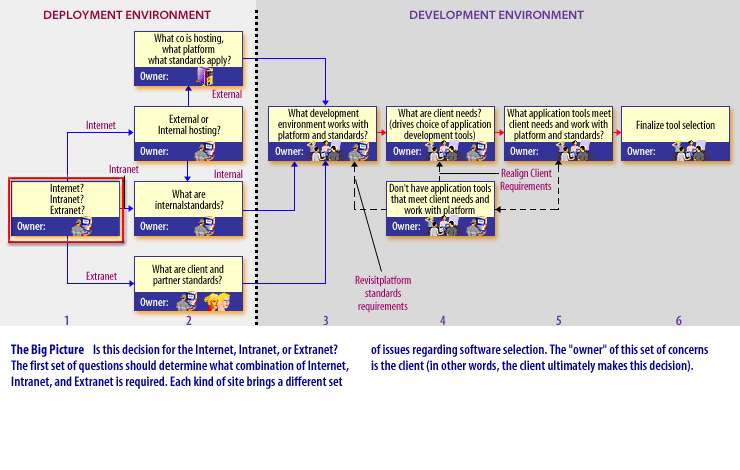
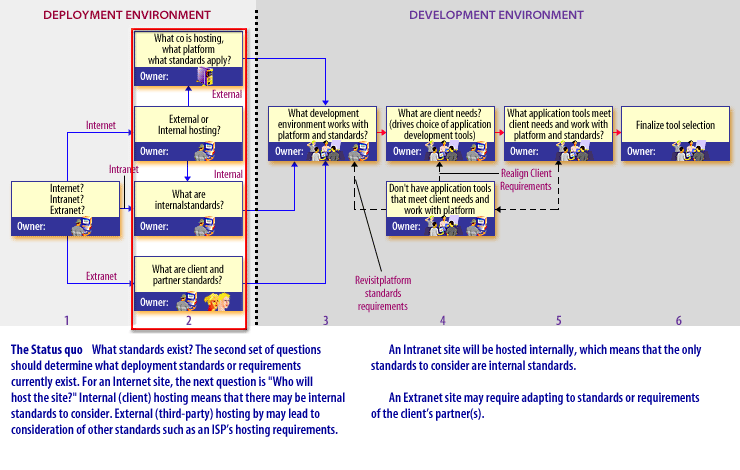
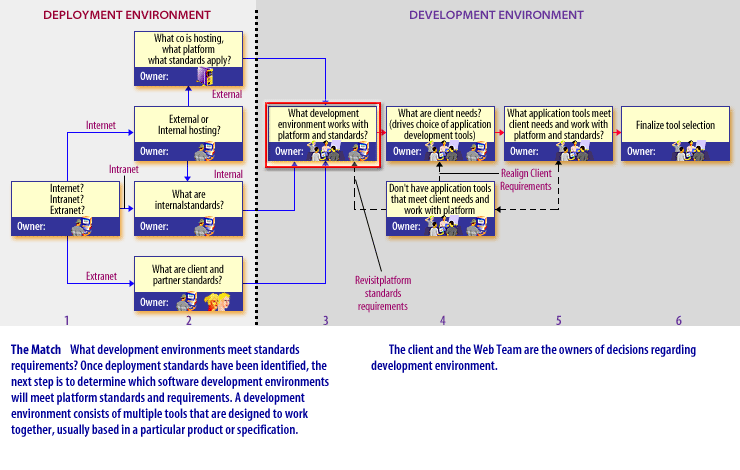
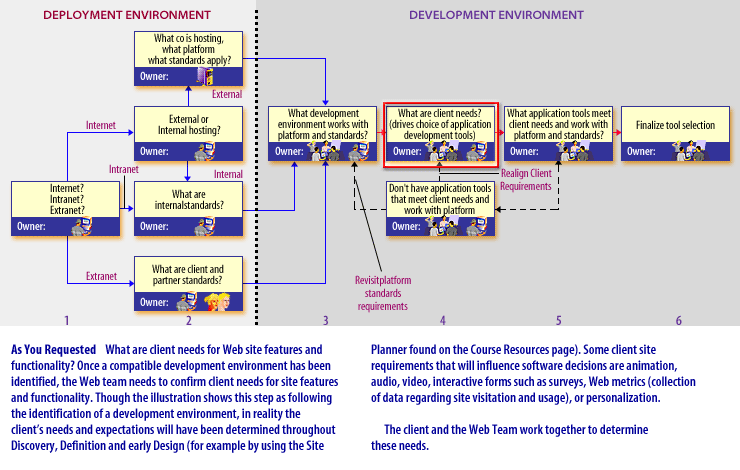
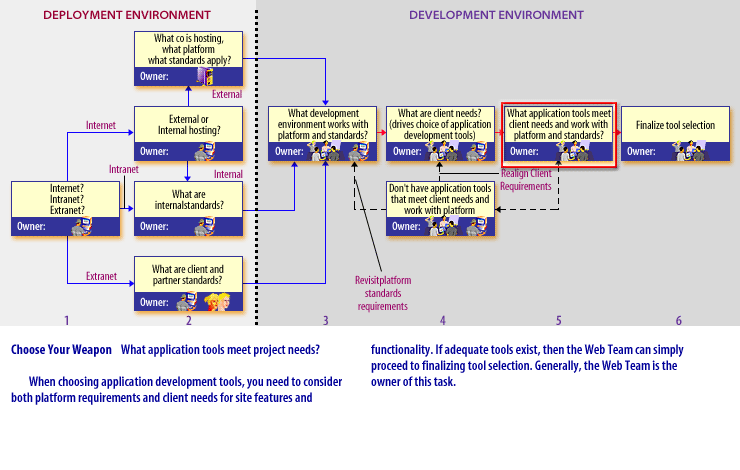
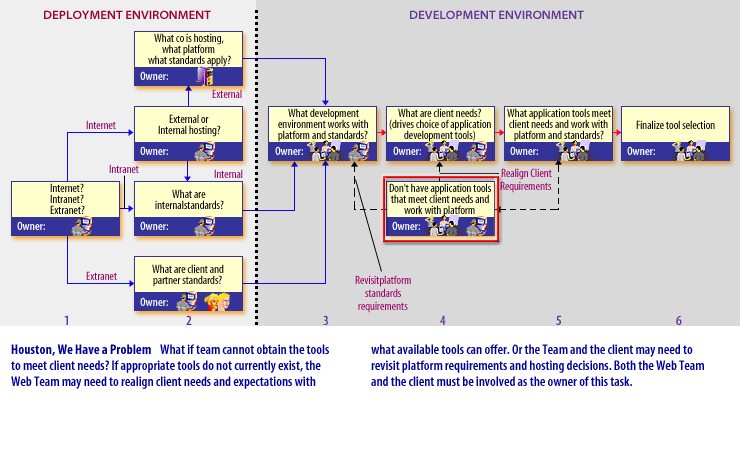
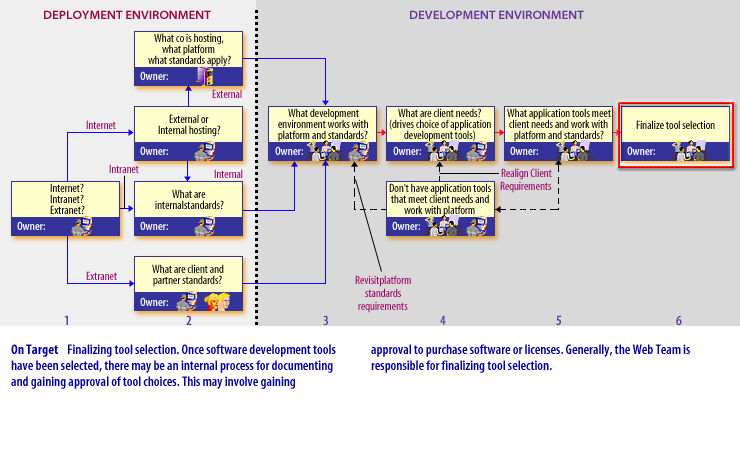
Principle Based Structure
In the real world
The following link
compares differences
in the software selection process for start-ups versus larger, more traditional companies.
Software Package Selection
Many organizations are attempting to save costs by integrating third-party, commercial off-the-shelf (COTS) packages (e.g., component libraries or extensions) or complete COTS-based solutions (e.g., enterprise resource planning [ERP] applications). The methods used to identify a set of possible candidate solutions are, for the most part, rather subjective.
The individual or individuals performing the evaluation have various, distinct experiences that will factor into the decision process, either consciously or subconsciously. To have a successful COTS evaluation, a formal process is needed to properly evaluate COTS products and vendors supplying them [SEI 05]. In this instance, the term formal means having an established and documented process to perform the selection and evaluation activities in a consistent, repeatable manner.
The individual or individuals performing the evaluation have various, distinct experiences that will factor into the decision process, either consciously or subconsciously. To have a successful COTS evaluation, a formal process is needed to properly evaluate COTS products and vendors supplying them [SEI 05]. In this instance, the term formal means having an established and documented process to perform the selection and evaluation activities in a consistent, repeatable manner.
Initial Selection
How does an organization conduct the initial research into products that might be candidates for use on their project?
How is the initial selection performed? Some organizations use an intuitive approach to select the initial list of products.
This approach uses an individual who has had past experience with the product or who has heard good things about the product.
An inappropriate selection strategy for COTS products can lead to adverse effects. It could result in a short list of COTS products that may not be able to fulfill the required functionality; in addition, it might introduce overhead costs in the system integration and maintenance phases .
One successful method for selecting products is the use of a selection team. When selecting a COTS component, the use of a team of technical experts systems/software engineers and several developers is recommended. When selecting a COTS-based system, however, the inclusion of business domain experts and potential end users is recommended. The use of a team virtually eliminates a single-person perspective or bias and takes into account the viewpoints and experiences of the evaluators in the selection and evaluation process.
One successful method for selecting products is the use of a selection team. When selecting a COTS component, the use of a team of technical experts systems/software engineers and several developers is recommended. When selecting a COTS-based system, however, the inclusion of business domain experts and potential end users is recommended. The use of a team virtually eliminates a single-person perspective or bias and takes into account the viewpoints and experiences of the evaluators in the selection and evaluation process.
In the next lesson, you will review what you have learned in this module.